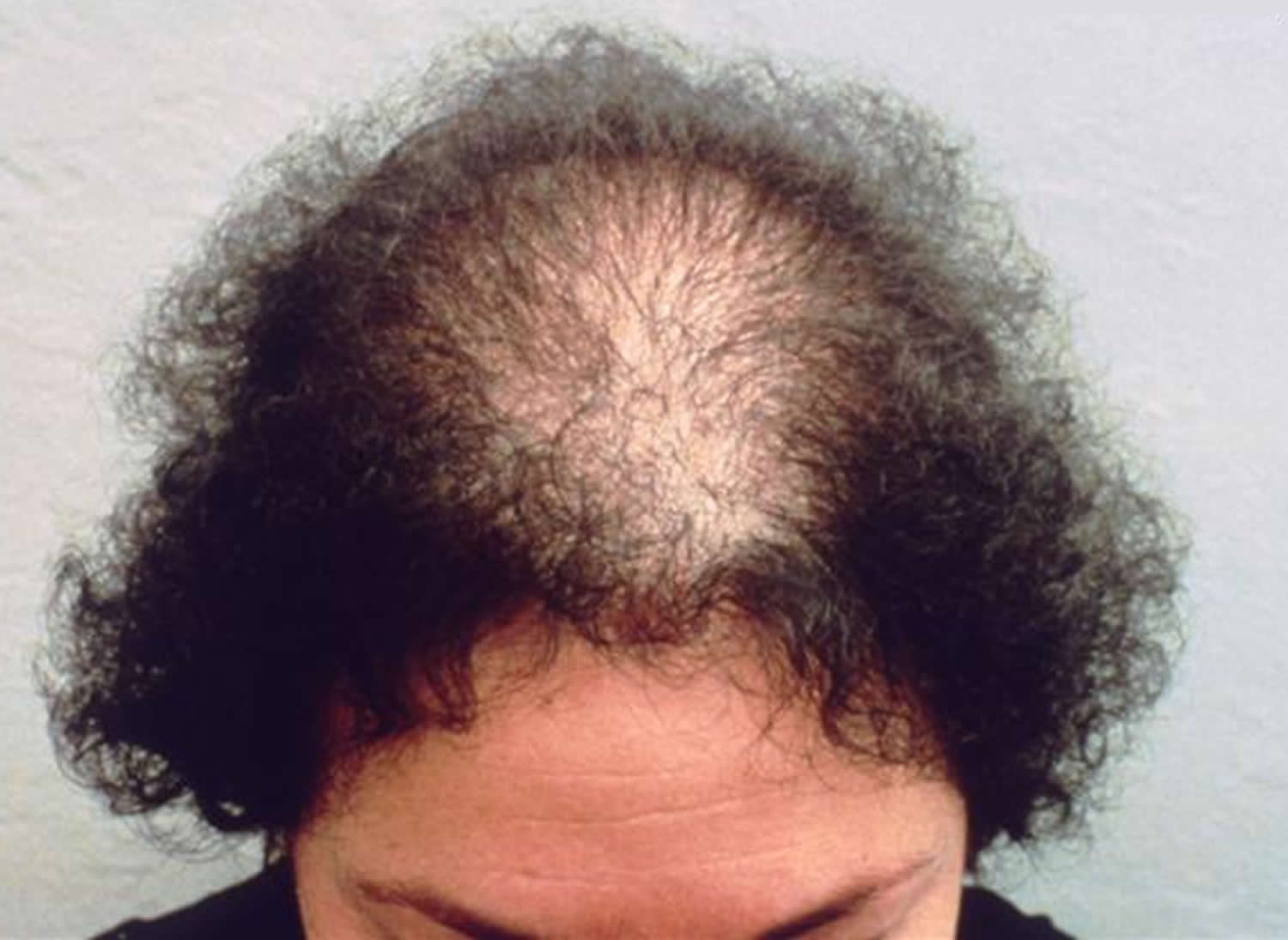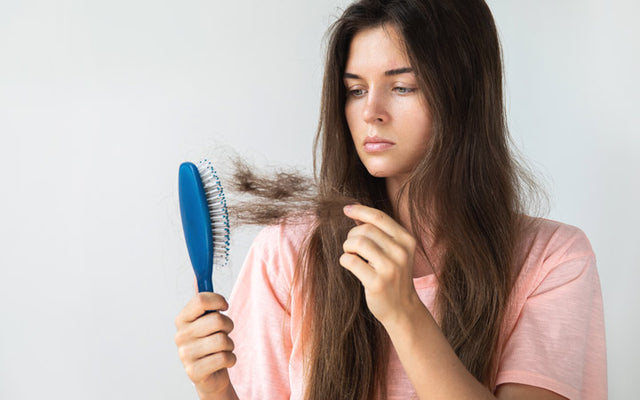Table Of Content

Most users see results after consistent use for about two months. By contrast, scarring alopecia, another autoimmune disease that causes hair loss, is often accompanied by itchiness, tenderness and scaling of the scalp. Scarring alopecia is the most devastating type of hair loss, Mirmirani says, because it permanently destroys the hair follicles. Here, dermatologists share what you need to know about alopecia, including possible causes, treatment options and what you can do to prevent more hair loss. Chemoand radiation therapy, two of the most widely used therapies, can take a toll on your hair. In their quest to kill cancer cells, both can harm hair follicles and trigger dramatic hair loss.
When to connect with a doctor
Effective treatments for some types of hair loss are available. You might be able to reverse hair loss, or at least slow it. With some conditions, such as patchy hair loss (alopecia areata), hair may regrow without treatment within a year. Treatments for hair loss include medications and surgery.

Hair Loss Treatments for Women: What Are the Best Options?
There are many other potential causes of hair loss in women. Androgenetic alopecia can occur at any age after puberty, but it’s most common in postmenopausal women. Advancing age and a family history of the condition are two of the primary risk factors. You're likely to first bring your concerns to the attention of your family doctor.
Chief Medical Editor, Harvard Health Publishing
It can be purchased over the counter, and it’s found in various strengths — typically 2% to 5%, Agbai says. Topical minoxidil “is applied directly to the scalp and works by increasing blood flow to the hair follicles, promoting hair growth and thickening existing hair,” she says. Topical minoxidil is one of the best hair loss treatments for women, particularly those who have female pattern hair loss. It’s not yet clear how the magic happens, but researchers theorize that minoxidil reverses hair follicle shrinkage and lengthens the growth phase.
Specifically, it binds to androgen receptors and decreases the body’s processing of testosterone. Alopecia means “hair loss.” There are many different types of alopecia, in addition to androgenetic alopecia. Treatment options for hair loss typically depend on the cause. They can also vary according to the pattern and location of hair loss.
In her spare time, she enjoys reading, yoga, and the occasional glass of wine. Factors like the cost of ingredients, the perceived popularity or luxury of the brand name. Not only that, but the product’s target audience can increase or decrease the price completely independent of how effective it actually is. A product’s effectiveness depends on the brand and its ingredients.
Other conditions that cause hair loss
Anyone can have androgenetic alopecia (pattern baldness). These hair changes can make it hard to maintain how you want to look, especially if you're transgender or nonbinary (which means you don't identify as fully male or female). You may want to shift where hair grows (or doesn't) to reflect your affirmed gender. Not all researchers agree that spironolactone works, and the FDA has not endorsed it as a treatment for androgenic alopecia. However, the medication has still been used off-label for years to treat hair loss in women.
15 Best Shampoos for Thinning Hair (Tests & Reviews 2024) - Cosmopolitan
15 Best Shampoos for Thinning Hair (Tests & Reviews .
Posted: Wed, 03 Apr 2024 07:00:00 GMT [source]
The FDA has approved a few laser treatment devices to treat hair loss at home. But we need more studies into their safety and effectiveness for long-term use. Spironolactone is another medication your doctor may prescribe for hair regrowth and to keep hair loss from getting worse. It stops the action of male hormones called androgens. Although it’s more common in men, hair loss regularly affects women and people of other genders. You may experience any one of several types of hair loss, such as hair thinning, a widening part, or patchy hair loss.
Prescription medication that can regrow hair
You can change how you care for your hair, which can prevent hair loss. Once you damage a hair follicle, hair cannot grow from that follicle. Having many damaged hair follicles creates permanent bald spots. Male-pattern hair loss is what causes a receding hairline and baldness in men. In women, female-pattern hair loss typically affects the crown or top of the head first, Mirmirani says.
You can expect 10–80% of transplanted hair to grow back in 3–4 months. Talk with a dermatologist or a hair restoration specialist to find out whether a hair transplant is right for you. Hair transplants involve taking hair from one area of your scalp and transplanting it into an area with hair thinning or balding. Some causes of hair loss are temporary and can be reversed, while others are permanent.
While alopecia doesn’t typically affect your physical health, the emotional and psychological distress it can cause are very real. You might notice your hair seems fuller during pregnancy. That’s because high hormone levels keep resting hairs from falling out. But after the baby comes, things go back to normal and those strands will fall out quickly. It could take up to 2 years for your locks to return to normal. Long, short, bouncy, or sleek, for most women hair is way more than a bundle of fibers.
Why You're Losing More Hair and the New Science to Help Regrow It - Oprah Mag
Why You're Losing More Hair and the New Science to Help Regrow It.
Posted: Mon, 11 Sep 2023 07:00:00 GMT [source]
Soon after, you may experience an increase in thickness or regrowth. It’s always a good idea to talk to your doctor about hair loss, since they can help identify any medical conditions contributing to hair loss and recommend the right treatment. With this type of hair loss, your follicles gradually shrink and the growth cycle is shortened. After a while, some follicles may stop producing hair. Things that interfere with the growth cycle -- like medications, illnesses, infections, or chemicals -- have the potential to stop hair from being formed the right way. Beyond that, age, hormones, stress, and even the way you style your hair can lead to hair loss.
Low level lasers may help improve hair density in people with genetic hair loss or hair loss due to chemotherapy. This procedure, also called red light therapy, may work by stimulating epidermal stem cells. The lauric acid found in coconut oil helps bind protein in hair, protecting it from breakage at the root and strand. Massaging coconut oil into your scalp may promote better blood flow and help with regrowth.
In fact, you probably lose between 50 and 100 single hairs each day, according to the American Academy of Dermatology (AAD). This is a procedure in which your doctor removes hair from a part of your scalp where hair growth is full and implants it into an area where hair is thinning. Pregnancy, and especially giving birth, can lead to hair loss. You're most likely to see hair loss about 3 months after giving birth.
Dozens of over-the-counter supplements and products purport to reverse hair loss, making it tough for patients to know which ones work and which don’t. Generally speaking, the sooner you start treatment, the more options you have and the better your results, dermatologists say. They might suggest a short cut, a different part, maybe a gentle body wave.


No comments:
Post a Comment